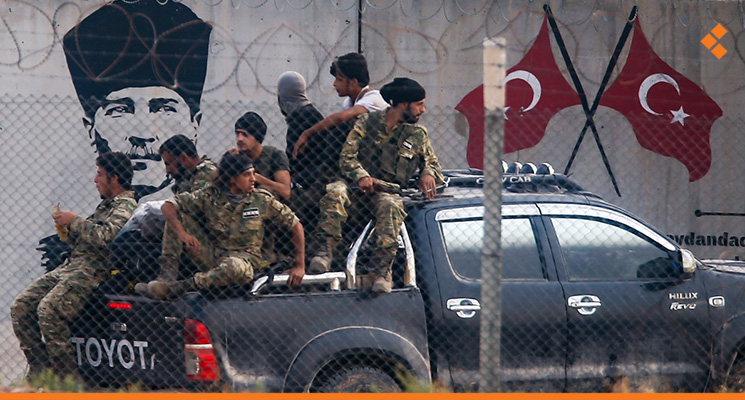The Turkish-backed National Army in northern Syria has denied any coordination with the U.S.-backed Free Syrian Army faction at the al-Tanf base situated on the joint Syrian-Jordanian-Iraqi border.
According to the opposition website Enab Baladi, the spokesperson for the National Army, Ayman Sharara, firmly refuted the social media reports claiming the deployment of fighters to the Tanf base. Sharara dismissed these claims as baseless rumours.
Addressing the alleged coordination between the National Army and the Free Syrian Army, Sharara emphasized the absence of any relationship between the two factions. He dismissed recent reports of meetings between them as unfounded rumours, without elaborating on the actual nature of their interaction.
These statements from the National Army follow the recent denial by the Free Syrian Army faction regarding any collaboration with the National Army. The denial came in response to information disseminated by the Observatory and the opposition Sham agency. These sources had suggested that the National Army was enlisting its members to be deployed to the Tanf area on the Syrian-Jordanian border as border guards, in exchange for financial compensation of up to a thousand US dollars.
The commander of the Free Syrian Army faction, Muhammad Farid al-Qassim, indicated that the faction had been making strides in coordinating with the Syrian Democratic Forces (SDF) and other unnamed armed factions. They aimed to establish a joint operations room to pool their efforts for a common cause. al-Qassim further noted that the SDF and various armed factions across Syrian territory shared a mutual determination to unify their endeavours to achieve their objectives, as reported by opposition media.
Regarding the Free Syrian Army faction’s activities in the Tanf region, the faction’s commander in that area clarified that recent exercises were all geared towards active participation in upcoming military actions. He emphasized the faction’s readiness to assume a frontline role in the event of any attacks in the region.
National Army instead of SDF
Amid the mutual denial by both the National Army and the Free Syrian Army regarding the alleged armed factions’ movement to the Tanf area, the Turkish newspaper Yeni Safak, known for its allegiance to President Erdogan, has reported on what it calls a new American strategy aiming to reshape the dynamics in Syria. According to the paper, this strategy is becoming evident through the deployment of around 3,000 militants along the Deir-ez-Zor-Tanf axis. The purported objective of this deployment is to disrupt the overland route connecting Tehran and Damascus via Baghdad.
The report suggests that the United States has dispatched a delegation to Ankara to present this new plan. The plan purportedly involves relocating Kurdish militants from areas such as Deir-ez-Zor, Tal Rifaat, and Manbij to areas east of the Euphrates River, while substituting them with forces from the National Army. These forces would supposedly counter the Syrian army and its allies.
According to the newspaper, commanders within the National Army faction have communicated their intention to align themselves with the Turkish military. It’s mentioned that these faction leaders have expressed to American officials that Turkey, not the PKK, should be the primary interlocutor with the United States. These commanders reportedly conveyed their skepticism about entrusting Washington due to concerns about reliability.
In summary, the Yeni Safak article highlights a perceived American strategy that involves redeploying militants and altering the dynamics in Syria, particularly in the Deir-ez-zor-Tanf region. This alleged strategy includes the involvement of the National Army faction in coordination with the Turkish military while raising doubts about the trustworthiness of dealing with the United States directly.
This article was translated and edited by The Syrian Observer. The Syrian Observer has not verified the content of this story. Responsibility for the information and views set out in this article lies entirely with the author.


